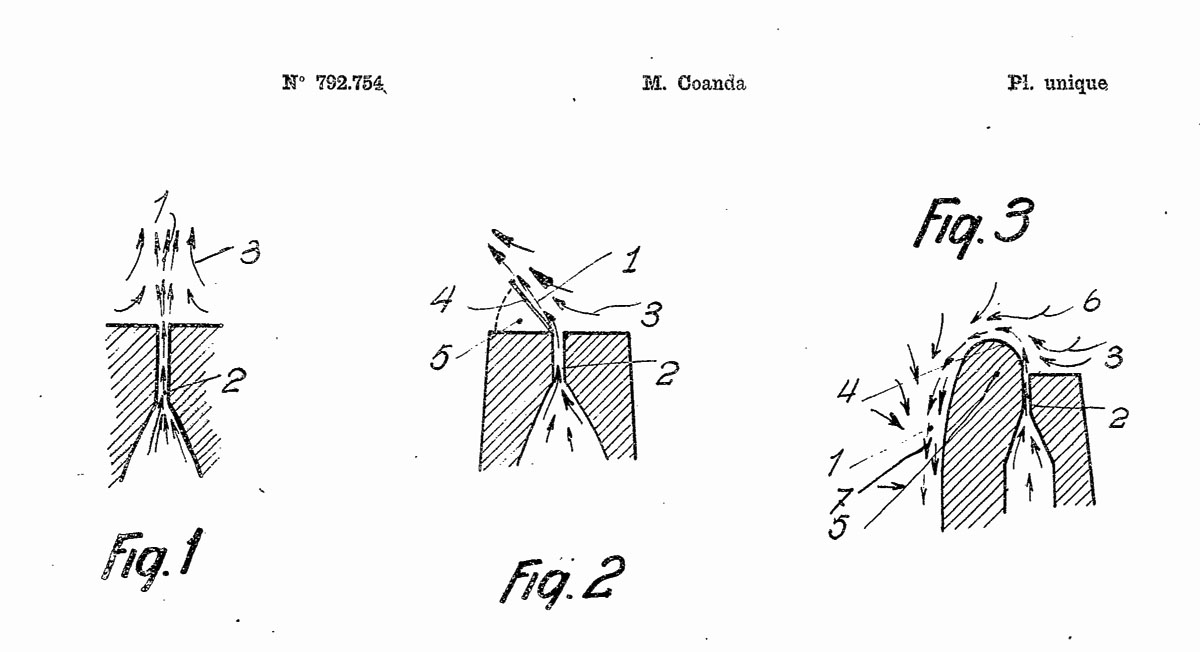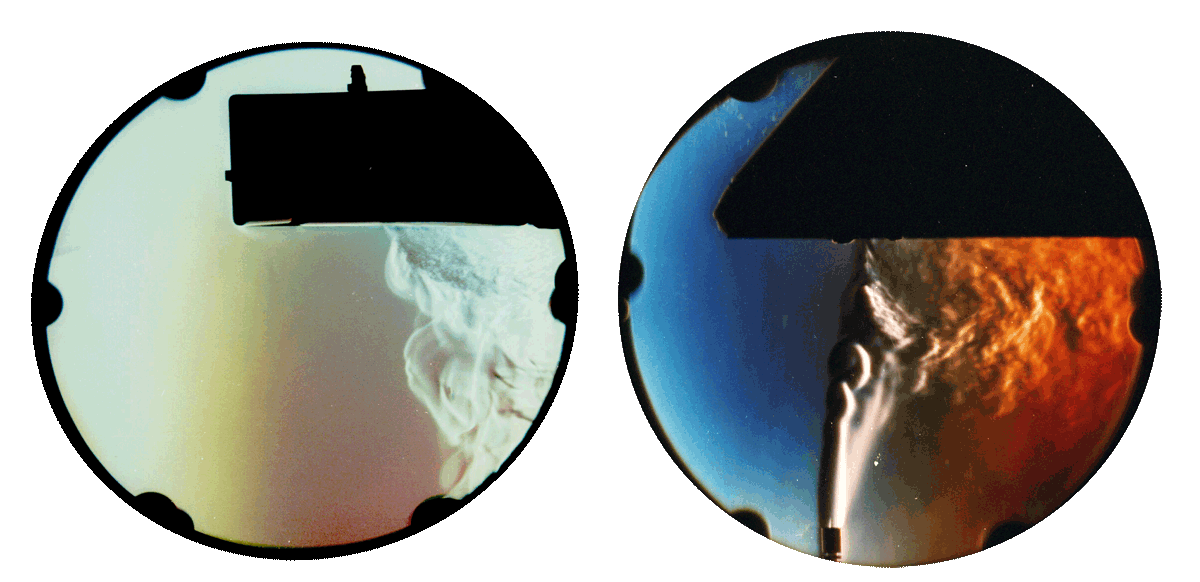an effect that points the direction / ein Effekt, der die Richtung weist
The Coanda effect describes the flow phenomenon that wall jets tend to follow a curved surface. The jet can adhere to the surface even after flowing 180° round a cylindrically curved surface. The flow direction is inverted!
But also the tendency of free jets to attach themselves to a surface or the tendency of two adjacent jets to attract each other is often termed as Coanda effect. For the first time, these phenomena were described by the Romanian-French engineer and inventor Henri Coanda in 1934 in his patent FR 792.754.
 Coandas patent FR 792.754 showing several types of the Coanda effect
Coandas patent FR 792.754 showing several types of the Coanda effect
There are many applications of the Coanda effect in fluid mechanics and aviation, for instance :
-
lift increase for airplanes
-
Air conditioning applications (Coandalutte in mining),
-
rotorless fans (Dyson Airmultiplier),
-
Helicopter without tail rotor (no tail rotor = NOTAR)
-
Cookerhoods with frontal Coanda flow.

Schlieren images of cooker hoods with Coanda effect.
The young Henri Coanda was also a pioneer of jet propulsion for airplanes. Our Coandajet project ist therefor named after him and the application of a wall jet over a profiled surface. This Coandajet propels an airplane.


